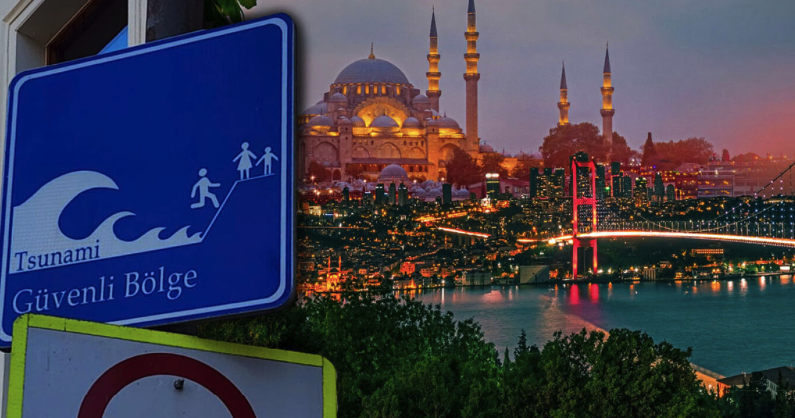Under the threat of a major earthquake in Constantinople, authorities in Turkey have been living for months now, preparing for both the direct effects of such an earthquake and the indirect ones, such as a tsunami.
In this context, in several parts of Constantinople, permanent tsunami warning signs have been placed for a few months now, urging people to move to higher parts of the city, away from the shores of the Bosphorus.
The first signs were placed in Büyükçekmece, a district on the European side of the city that hosts a long coastline in which there are densely populated areas separated from the sea only by beaches and a long promenade in the greater Istanbul metropolitan area.
At the same time, however, such signs have also been placed in the more central parts of Constantinople, such as the Phanar.
As protothema.gr found, there are even signs outside the Ecumenical Patriarchate in the historic quarter.
Lekkas: A major earthquake in Turkey is a given
In this context, a major earthquake in Constantinople was warned once again by Efthimios Lekkas, professor of Dynamic Tectonics Applied Geology and Natural Disaster Management and president of the OASP, who pointed out that seismologists from all over the world have made similar estimates.
“The North Anatolia fault that starts from the Caspian Sea and ends in the Aegean Sea with a length of 1,300 kilometers, has only one part that has not broken and has not given a big earthquake and it is located in the submarine area south of Constantinople,” Efthimios Lekkas told ERT, referring to the estimates that a strong earthquake of up to 7.5 Richter is expected in Istanbul.
At the same time, he clarified that it is not a new fault but a large tectonic structure that is a branch of the North Anatolia fault.
A second branch is the one from Nicomedia, which passes through Prusa and spreads into two branches 50 kilometres to the south. Asked if the direction is towards our country, Efthimios Lekkas replied.
So both faults have a projection in the Aegean Sea, not in the mainland of Greece.”
“The estimates are not just Turkish seismologists, but correspond to estimates by teams from all over the world.
Therefore, there is at this moment as a given that we expect a big earthquake in Constantinople,” Lekkas added.
“President Erdogan himself is campaigning on the basis of the earthquake and says his own candidate is more capable of handling a potential earthquake disaster in Constantinople.
So you understand that in Istanbul, because it is a city of 20 million people, there is a very high exposure of the population.”
At Great risk is Istanbul
He sounded the alarm for Constantinople, saying that “I think that the exposure due to population accumulation and density is too high.
One third of the houses in Constantinople are old structures before any seismic regulations.
One third are modern structures with seismic regulations.”
But that hardly tells us anything.
Because we saw just last year that in Antioch and the surrounding area what has happened even to new structures.
That’s where they had the biggest problem, those structures last year blew up during the night.
Structures in the new city of Istanbul towards the airport also proved to be unsafe,” Lekkas pointed out.
“Hagia Sophia has great vulnerability”
Vulnerability even with static loading, i.e. without an earthquake. I think that the exposure due to population accumulation and density is too high.
China: 100 car pile-up on a major highway – Watch video
One third of the houses in Istanbul are old structures before any seismic regulations, One third are modern structures with seismic regulations.
But that doesn’t tell us much.
Because we saw just last year in Antioch and the surrounding area what has happened even to new structures.
That’s where they had the biggest problem, those structures last year blew up during the night.
Structures in the new city of Constantinople towards the airport also proved unsafe, Lekkas pointed out.




































